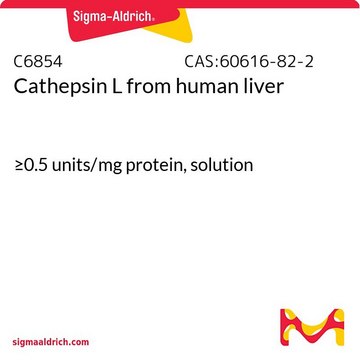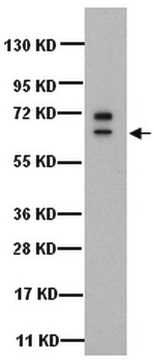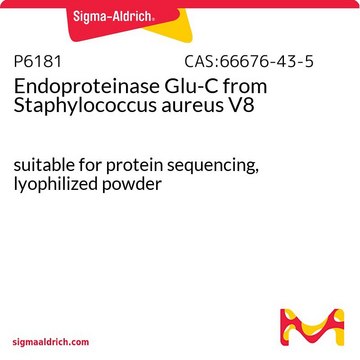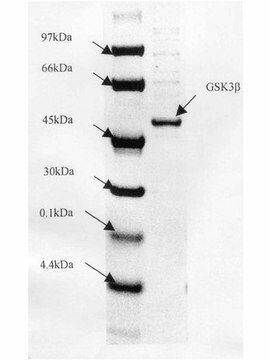219402
Cathepsin L, Human Liver
Cathepsin L, Human Liver, CAS 60616-82-2, is a native, the most potent of all the lysosomal proteinases. Plays a major role in the proteolysis of both cellular and endocytosed macromolecules.
Sinônimo(s):
CTSL, CTSL1, Human Cathepsin L, Major excreted protein (MEP)
About This Item
Produtos recomendados
fonte biológica
human liver
Nível de qualidade
descrição
Merck USA index - 14, 1905
Formulário
liquid
fabricante/nome comercial
Calbiochem®
condição de armazenamento
OK to freeze
avoid repeated freeze/thaw cycles
técnica(s)
activity assay: suitable
adequação
suitable for molecular biology
aplicação(ões)
life science and biopharma
Condições de expedição
wet ice
temperatura de armazenamento
−70°C
Informações sobre genes
human ... CTSL(1514)
Descrição geral
Cathepsin L, Human Liver, native, is the most potent of all the lysosomal proteinases. Cathepsin L (CTSL) belongs to the papain subfamily of cysteine proteases and is mainly located in endolysosomal vesicles.
Ações bioquímicas/fisiológicas
Embalagem
Advertência
Definição da unidade
forma física
Nota de preparo
Reconstituição
Outras notas
Informações legais
Código de classe de armazenamento
12 - Non Combustible Liquids
Classe de risco de água (WGK)
WGK 2
Certificados de análise (COA)
Busque Certificados de análise (COA) digitando o Número do Lote do produto. Os números de lote e remessa podem ser encontrados no rótulo de um produto após a palavra “Lot” ou “Batch”.
Já possui este produto?
Encontre a documentação dos produtos que você adquiriu recentemente na biblioteca de documentos.
Nossa equipe de cientistas tem experiência em todas as áreas de pesquisa, incluindo Life Sciences, ciência de materiais, síntese química, cromatografia, química analítica e muitas outras.
Entre em contato com a assistência técnica








